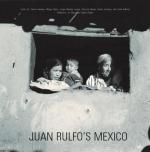|
This section contains 3,981 words (approx. 14 pages at 300 words per page) |

|
SOURCE: "Juan Rulfo: díalectics and the Despairing Optimist," in Híspanla, Vol. 65, No. 4, December, 1982, pp. 580-85.
In the following essay, Ramírez explores Rulfo's use of polarities, such as chaos and order, death and life, power and powerlessness, and love and hate, and asserts that this technique illustrates Rulfo's belief in the conflictive nature of reality.
Baudelaire finds an artistic vision is "always double, though the impression it produces is one. . . ." This can be seen in the frequently dialectical world of Juan Rulfo's short story collection, El llano en llamas (1953), and his novel, Pedro Páramo (1955), in which we encounter such dualities as life and death, Inferno and Paradise, illusion and disillusion, love and hate, and reality and irreality. Yet, despite the tension of these polarities, the total effect is one of coherence. [In Cuadernos, 1960] Carlos Fuentes is cognizant of this:
. . . Rulfo llega al fondo de las...
|
This section contains 3,981 words (approx. 14 pages at 300 words per page) |

|


